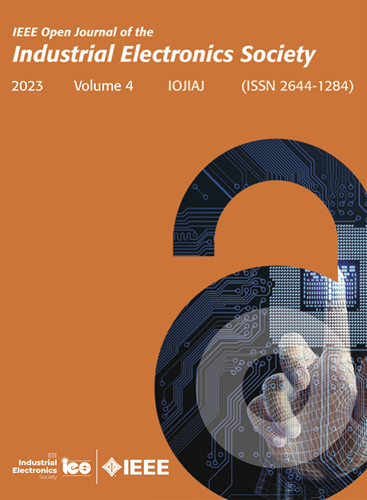基于多时间尺度电热耦合模型的DC-DC变换器功率器件温度评估
IF 7.2
1区 工程技术
Q1 AUTOMATION & CONTROL SYSTEMS
引用次数: 0
摘要
在直流-直流变换器中,结温是保证功率器件安全性和现场可靠性的关键参数。传统的电热方法依赖于耦合电学和热学模型的迭代计算,由于时间尺度的差异而面临挑战,其中功率器件在快速时间尺度上表现为动态运行,而热效应在更长的时间尺度上演变。为了解决这一挑战,本文介绍了一种新的多时间尺度电热耦合模型,该模型在计算各种工作条件(如开关频率、负载分布和环境温度)下的功率器件结温时平衡了计算需求和准确性。该模型集成了包含功率损耗模型和功率器件状态模型的电路模型,以及采用有限元方法构建的热模型。为了降低计算复杂度,对热模型采用适当的正交分解(POD)方法。利用功率器件的多时间尺度电热模型迭代计算结温,并在LLC谐振dc-dc变换器中进行了验证,表明该方法具有较高的计算速度和精度。结果表明,该多时间尺度电热模型在实际运行条件下对功率器件的复杂热动力学具有优异的管理性能。本文章由计算机程序翻译,如有差异,请以英文原文为准。
Temperature Evaluation of Power Devices in DC–DC Converters Based on Multitimescale Electrothermal Coupling Model
Junction temperature is a critical parameter for ensuring the safety and field reliability of power devices in operational dc–dc converters. Traditional electrothermal methods, which rely on iterative calculations coupling electrical and thermal models, face challenges due to the disparity in timescales, where power devices manifest dynamic operation on fast timescales, while thermal effects evolve over much longer timescales. To tackle this challenge, the article introduces a novel multitimescale electrothermal coupling model, which balances computational demand and accuracy in calculating the junction temperature of power devices under various operating conditions such as switching frequency, load profiles, and ambient temperature. The proposed model integrates a circuit model encompassing a power loss model and a state model for the power device, with a thermal model constructed using the finite element method. For reducing computational complexity, the proper orthogonal decomposition (POD) method is applied to the thermal model. The junction temperature is iteratively calculated using the multitimescale electrothermal model of the power device, which is validated in an LLC resonant dc–dc converter, demonstrating that the proposed method achieves high computational speed and accuracy. The results confirm that the multitimescale electrothermal model exhibits excellent performance in managing the complex thermal dynamics of power devices under real-world operating conditions.
求助全文
通过发布文献求助,成功后即可免费获取论文全文。
去求助
来源期刊

IEEE Transactions on Industrial Electronics
工程技术-工程:电子与电气
CiteScore
16.80
自引率
9.10%
发文量
1396
审稿时长
6.3 months
期刊介绍:
Journal Name: IEEE Transactions on Industrial Electronics
Publication Frequency: Monthly
Scope:
The scope of IEEE Transactions on Industrial Electronics encompasses the following areas:
Applications of electronics, controls, and communications in industrial and manufacturing systems and processes.
Power electronics and drive control techniques.
System control and signal processing.
Fault detection and diagnosis.
Power systems.
Instrumentation, measurement, and testing.
Modeling and simulation.
Motion control.
Robotics.
Sensors and actuators.
Implementation of neural networks, fuzzy logic, and artificial intelligence in industrial systems.
Factory automation.
Communication and computer networks.
 求助内容:
求助内容: 应助结果提醒方式:
应助结果提醒方式:


